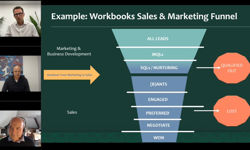
Free, ad-funded digital services - such as email, social media, online news and streaming services - are worth an average £14,600 per year to every UK household in consumer surplus, indicating the high value that people place on having free online access, according to a new study.
‘The Digital Dividend’ - produced by Public First for IAB UK - draws on economic impact modelling, data analysis, and consumer opinion research to assess the value of digital advertising to the UK economy, its businesses and consumers.
The study shows that the digital ad industry contributed a total of £129 billion in gross value added (GVA) to the UK economy in 2022, supporting 2 million jobs around the country - 6% of the total UK workforce. For every £1 spent on digital advertising, £4.80 was delivered back to the economy in GVA.
The total £129 billion in GVA encompasses both the direct and indirect economic impacts of the digital advertising industry, added IAB UK. This breaks down as follows:
- £39bn directly generated by businesses within the digital advertising sector, such as agencies, social media platforms and ad tech companies. This is greater than the direct impact of the UK’s legal sector (£34bn GVA) and twice as large as the agricultural industry (£19bn GVA)
- A further £41.3bn from businesses around the country that advertise online benefitting from return on digital ad spend
- £48.5bn supported by digital advertising along supply chains i.e. generating increased demand for products and services such as office rentals or computer equipment.
Meanwhile, the actual cost saving for UK households of not having to pay for ad-funded digital services stands at £580 a year - almost four times the annual BBC licence fee. The cost-of-living crisis is throwing the value of the ad-funded internet into sharper focus , with 70% of UK adults saying that it’s important to them that online services are provided for free, while over a quarter of people have used free online entertainment more in the last year as a result of budgets being squeezed.
The benefits of digital advertising for businesses are also highlighted by the report. Those that invested in digital advertising in 2022 saw a combined total of £73 billion in increased sales as a result, with £26 billion of that among small and medium sized companies.
Commenting on the report, Christie Dennehy-Neil, IAB UK’s head of policy & regulatory affairs, explained: “The vast majority of us rely on the internet every single day to stay in touch and informed - be it email, news, maps or social media – and the reality is that it’s only free because of advertising. This study provides much-needed insight into the huge contribution that the digital ad industry makes to the UK economy and how people value the vital services it funds.
“Having a deeper understanding of this is particularly important at the moment, with 85% of the population worried about rising inflation and the Government considering how to further regulate the digital ad sector. This can only be done effectively if the very real benefits that digital advertising delivers for people and businesses across the country are recognised and protected.”
John Whittingdale, Minister of State for Media and the Creative Industries, said: "Digital advertising is growing from strength to strength in Britain. It contributes hundreds of billions to our economy, supports millions of jobs and ensures that consumers can enjoy hundreds of online services without charge.
"We want to maximise the potential of the creative industries and, through our Online Advertising Programme, we are cracking down on illegal ads so our advertising sector can continue to thrive."
Scott Corfe, director at Public First and one of the authors of the report added: “One in every 16 jobs in this country are supported by digital advertising, which underscores how vital the industry is to our nation’s economic health. For context, the UK’s motor industry was a fundamental barometer of the country’s industrial success for decades, but the reality is that today the digital advertising industry has a direct employment footprint that is 50% larger than the auto sector.”
Keep up-to-date with publishing news: sign up here for InPubWeekly, our free weekly e-newsletter.











